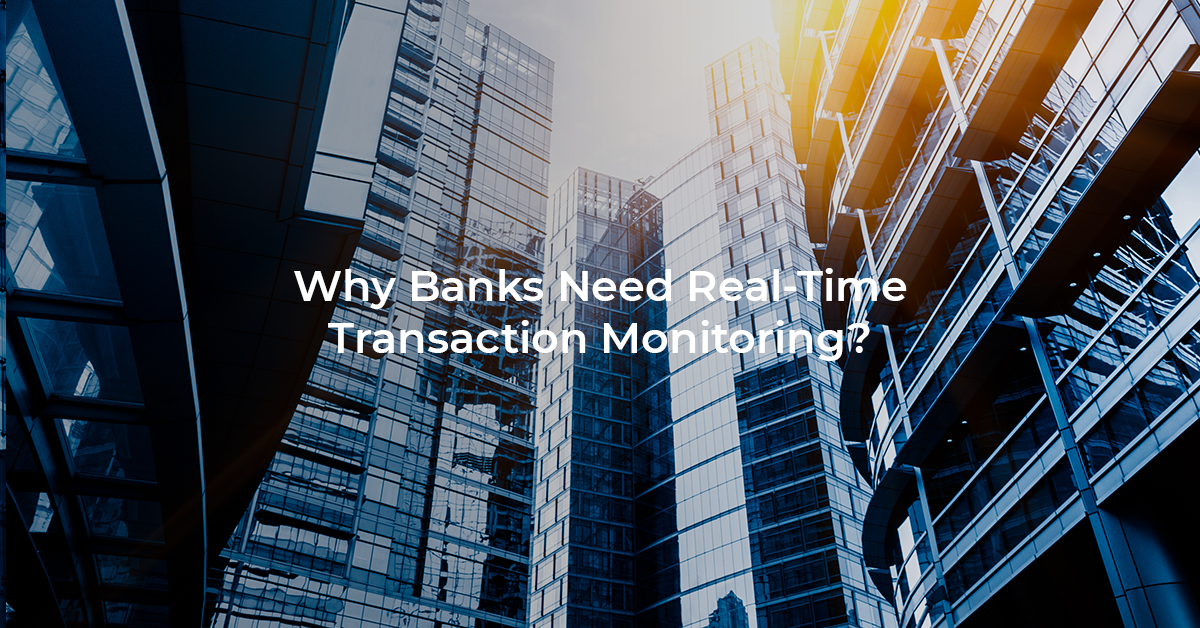
Why Banks Need Real-Time Transaction Monitoring?
The banking industry is changing from a physical to a digital one in today’s information economy. Conversely, digital transition presents a unique set of difficulties. Banks are dealing with a fresh and intricate set of money laundering issues, and the number of regulatory infractions keeps going up. Conventional methods of handling AML concerns might not be effective for digital banking and payment businesses. The path to a new, more successful response scenario is represented by the possibility of real-time capabilities. The creation of the required labeled data indicating user behaviors, fraud, or money laundering is the largest obstacle to the development, upkeep, and operation of such real-time platforms. In the early phases of development and real-time use, carefully planning for recovery, control, and monitoring is crucial. Initiatives in the regulatory utility market pertaining to comprehending and examining real-time transaction data are expanding significantly, and bank-to-bank communication is quickening.
For banks and other financial institutions, real-time transaction monitoring has proven to be a crucial operating tool and differentiator. Real-time platforms used by banks have been essential in combating money laundering and payment fraud over the years. It makes use of adaptive machine learning models and complicated rule sets with very low latency requirements across a variety of complex transaction data. The business value of transaction monitoring is the real-time response to any risky event, including alert production, notification, control, and prevention.
Real-time financial accounting systems offer better opportunities for quality control of key business processes in addition to standard audit procedures (account balances, general ledgers, on-site audits), governance-related matters (board of directors, supervisory board, and committee of the auditors), and other elements.
Why banks need Real-Time Transaction Monitoring?
After looking into the alerted transactions, the transaction monitoring teams determine whether more action or a reporting submission is required to comply with regulations. Applications designed to combat financial crime can be used for this, albeit certain tasks still require manual labor. Real-time monitoring enables the detection of possible money laundering at the time of transaction. The likelihood of preventing the transaction from being completed increases with early identification, which improves the possibilities of recovery for the asset recovery teams.
Financial institutions provide services to a wide range of customers who carry out several transactions all day long. Traditional bank models that were put into place many years ago find it challenging to manually monitor every transaction due to the volume of them. It will take more time and effort to manually identify which clients to monitor in accordance with Anti-Money Laundering (AML) or Counter-Terrorist Financing (CTF) rules. Most financial institutions believe this to be unfeasible because it raises labor and operational expenses.
Advantages of Real-Time Transaction Monitoring
The following are some benefits of using these systems for real-time detection and prevention of illegal transactions: they offer excellent fraud detection capabilities; they identify a lot of fraudulent transactional activity and allow for its prevention before it is completed; they do not require historical trend analysis because activity is identified based on how it deviates from the expected or default behavior of these transactions; they involve real-time monitoring of all transactions and do not require the addition of variables that can be explained in order to distinguish between fraudulent and authentic transactions.
Real-time transaction monitoring aims to identify and stop several types of transaction fraud as soon as these transactions take place. Financial institutions and law enforcement can be alerted when transactions are discovered before they are finished, and action can be taken right away to halt the transactions and, if feasible, identify the person or people who started them. If not, transactions can be finished and money needs to be located and retrieved. Inspired by the outstanding outcomes obtained from the use of real-time credit card fraud monitoring and detection systems, this architecture has started to be implemented in other financial domains, such as consumer and business credit, different types of debit or electronic fund transfers, and payment authorization for all these categories of debt.
Why is Real-Time Transaction Monitoring used?
For instance, managing client interactions solely through the monthly invoicing process is no longer sufficient in the rapidly expanding telecoms sector.
The global deregulation of most telecommunications has resulted in a significant transformation of the industry structure.
Resorts have long understood that the best time to upsell is right after a client checks out, and that’s also the time when the competitive pressure to stay in from other hotels and nearby attractions is at its strongest. Deregulation of the industry has also brought about ruthless competition and the emergence of new low-cost carriers that have succeeded by running their operations completely differently.
Airlines have developed systems that are intended to facilitate near-real-time transactions, real-time confirmation, and the issue of customized, suite-specific electronic tickets. At their cores are seat inventory and cost visibility. The airline industry as a whole is in the process of revamping its business in order to successfully compete with these new entrants.
Day-to-day life has been impacted by electronic commerce with the Internet. Today, trade, travel, and social encounters may all be carried out in a way that frequently leads to the actual development of a business connection after a transaction is settled. The genuine concern that minute-by-minute responses to e-commerce partners could cost billions of dollars in lost revenue is even more unsettling for traditional batch processors.
Tuncay Çoruh, Product Development Director

